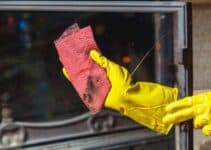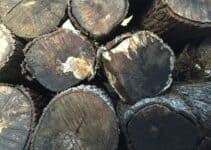Burning wood logs in your fireplace can be a delightful and relaxing experience, but chances are that at some point you will be faced with a smoky room. If left to fume without intervention, that smoke could damage your property, cause itchy eyes and health complications for those in the home, and make for an altogether unpleasant experience.
So why is your log burner filling the room with smoke? The reason this can happen is due to paint curing, problem with installation, incorrect baffle position or a blocked chimney.
The odd bout of smoke coming out of log burner is thankfully due to a few things that you can quickly sort to resume optimal functioning. Let’s look at a few common reasons why your log burner smokes.
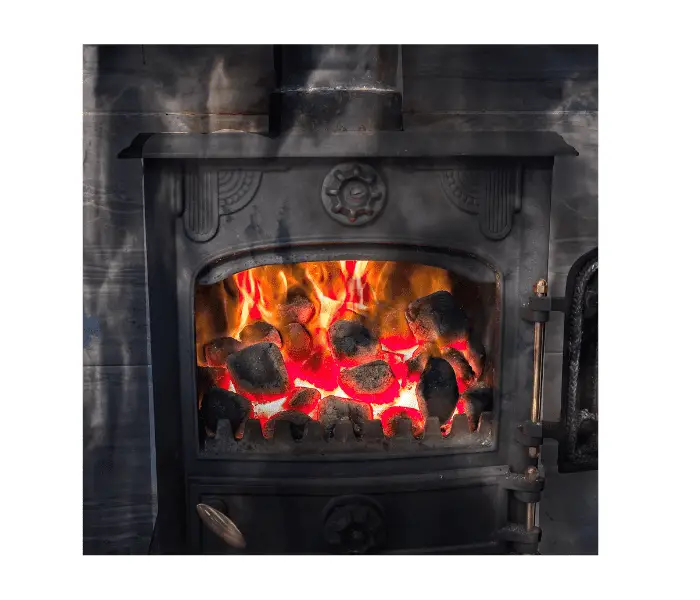
Why is My Log Burner Smoking?
The log burner itself is rarely the cause for smoking in your home. So why is my log burner smoking? Smoke will be generated directly from the furnace if:
Paint Curing – New Log Burner Smoke in Room
New wood burners will produce smoke in the stove, so there is no cause for panic if yours is new. The most common reason for the influx of smoke in new wood burners is that the paint is still curing.
You see, for all wood-burners, the paint applied on the stove appliance is not usually well finished until it is exposed to heat a few times – think of it as induction by fire (literally).
The curing process will take about three to four times of heating and in the meantime, there will be a chemical type smell.
The best thing to do is burn your new burner on days when you don’t really need the heat: opening windows and doors to rid yourself of the smell and smoke from the house. It will thankfully soon go.
Problem With Installation
This problem could result from various faults, including a manufacturing fault like a gap in the stove body and installation issue like something being fitted incorrectly onto the flue, or it could even be a draw issue.
Any of the above installation issues can bring forth a smoke problem. Enlisting a professional to check it out will be prudent.
Incorrect Baffle Position
The baffle is responsible for reflecting heat into the furnace box to ensure maximum combustion. More fire means more heat that makes the air rise.
If the baffle is not connected correctly to the stove, smoke emission could be imminent.
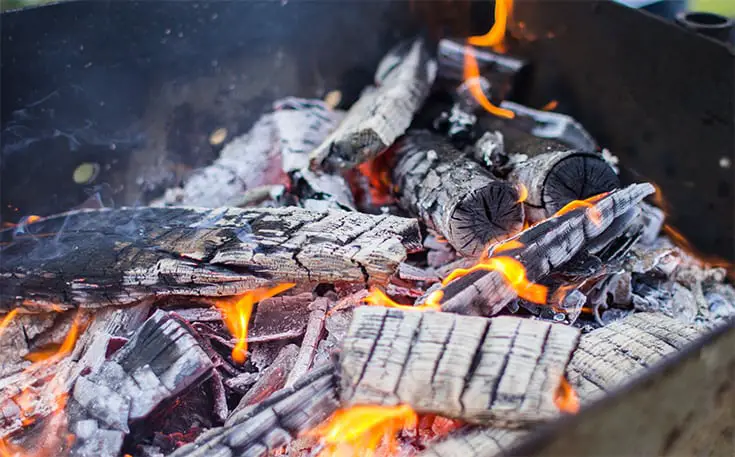
Why Does My Wood Burner Smoke When I Open The Door?
The wood burner is designed to direct the smoke upwards up into the chimney and outwards. Any deviation to this process indicates that the smoke is backing out into your rooms.
The stove is rarely the cause, and problems with your chimney or room’s air pressure are likely the cause.
Let’s look at some of the reason log burner smokes into your room:
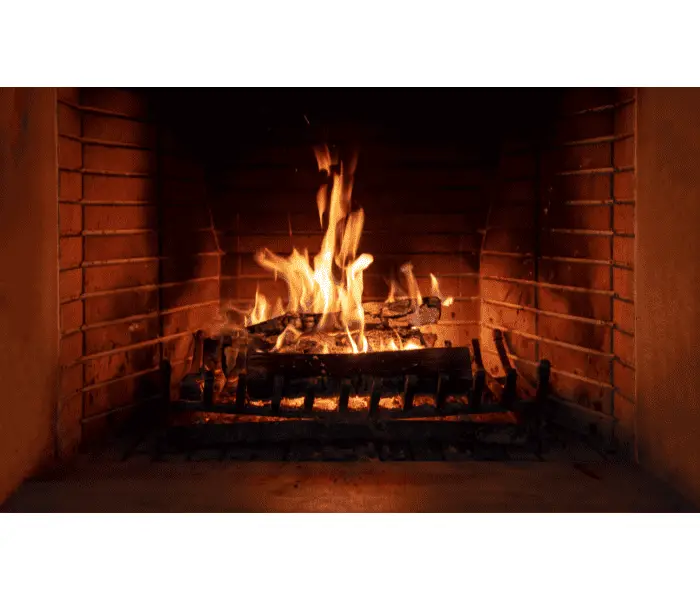
A Blocked Chimney
A blocked chimney is the cause of smoking in many circumstances. Accumulation of dirt and soot in the chimney airways could block the hot smoke rising, leading it to burst into your rooms.
A Cold Chimney
The principle that hot air rises while cold air sinks creates the basis for which smoke coming out of your log burner. Therefore, the smoke needs to be warmer than the surrounding air to achieve this objective.
Chimneys with poor insulation or close to the outside walls are likely to experience light fires with excess smoke from the stove.
Windy Weather
If your house sprawls over a plain or flat piece of land, your chimney might at times struggle to expel the smoke from your log burner.
Strong winds can create a flute-like effect that pushes the rising smoke right back to the stove and eventually into your rooms. So if you notice raging winds outside when your log burner smokes, chances are the high winds are the cause.
Ventilation Problems
If you have a wood burner or intend to get one, your home’s ventilation is pivotal. Specification for proper air circulations in and out goes a long way to improve your burner’s efficiency.
Combustion is the reaction of a flame with air (oxygen), and insufficient air will lead to dulled fires, or even the burner going off altogether.
The air in the chimney should be warm to avoid an influx of smoke to help it rise and for effective expulsion. However, poor ventilation deprives the flame of valuable air that in turn sets off a chain of reactions that lead to wood burner smoke in your room.
Wrong Height For Your Flue Pipe
The right height for your flue is paramount to ensure efficient smoke emission to the outside. Too short and too long could equally cause a smoke problem.
The minimum flue height recommended by most flue manufacturers and Building Regulations is about 4.5 metres (15 inches) from the top of the stove.
Shorter flues will generally have problems delivering enough updraught to remove flue smoke, and this situation could dramatically get worse in adverse weather.
On the other hand, excessively long flue pipes will create cold air pockets at the very top end of them. The cold air will push back on the rising flue gases to a point where the pressure is insufficient to create an updraught that will expel the smoke effectively.
Wet Wood
Moist wood will naturally produce more smoke than usual. The fire will first have to burn off the excess moisture to produce heat effectively.
Compared to burning wood that is well-seasoned, the smoke from wet wood is too much and is bound to fill your rooms eventually.
How Do I Stop My Wood Burning Stove From Smoking?
Generally, the way to keep out smoke from your house is to ensure the correct air pressure, have free-flowing air chimneys, and use the proper fuels to burn.
Try the proven solutions below to avert any smoke problems you might experience:
Use Safe Fuel, Kindle, And Tinder
According to CSIA approval, logs are fuel, dry twigs are kindle, pine cones and newspaper are tinder. Usage of well-seasoned woods will reduce smoke creation significantly, which works on preventing unsolicited intrusion of smoke into your home.
Use kindling like this:
Remove Ashes From The Firebox After Use
It is good practice to shovel out ashes from the last burn. The ashes can cause low air circulation in the firebox, which leads to inefficient combustion of the logs to produce the heat necessary for warming your family and expelling the smoke as well.
Regularly Sweep Your Chimney
The simple practice of sweeping and cleaning your chimney can save you and your family a great deal of inconvenience and health risk hazards from smoke.
Over time, dirt accumulates inside the chimney and the flue pipe and blocks the airways. These blockages impede the efficient expulsion of smoke.
Fit a Specialist Chimney Cowl
The chimney cowl is specifically for homes that encounter strong winds that might push back on the smoke in the chimney. You should enlist a professional to install a suitable cowl to provide a permanent solution to your wind problem.
Insulate Chimneys In Cold Areas
Chimneys that are not insulated are susceptible to creating cold pockets meaning that the updraught necessary for the air to rise will be cancelled out, leading to a build-up of smoke in the flue pipes and eventually bursting into the rooms.
How To Stop Smoke Coming Out Of A Wood Stove When The Door Is Open
No one enjoys smoke on their face when they open the wood stove doors. Here are some safe practices to open or reload your wood burner without letting smoke into your house:
Don’t Reload When There Are Flames
Avoid reloading your firebox when the logs are still in the process of combustion. Instead, wait till there are no flames but red-hot coals to add more wood. That way, you have no risk of letting out smoke.
Load Towards The Back Of The Firebox
You should move the coals to the front of the firebox and add the wood at the back, thereby minimising the chances of new smoke escaping through the stove door.
Crack The Door Before Opening Fully
Opening the door slightly allows air pressure to rebalance; therefore, the smoke will not escape outside the ‘vacuum’ through the door.
Risks Associated With Smoke Filling The Room
Smokes and other gas emissions pose a serious health threat. It is now a legal requirement for a carbon monoxide alarm to be installed with a new wood burner that detects the presence of carbon gases.
Combustion of woods creates deadly gases such as sulphur dioxide and carbon monoxide, whose effects can be fatal. Carbon monoxide is colourless, odourless and tasteless, making it a true silent killer.
Therefore, smoke emission into the rooms is very hazardous, and you should always open up the windows and get out of the room. Smoke may also destroy your walls and belongings as it carries soot that accumulates onto surfaces blackening the surface.
Why Is My Stove Smoking? A Summary
So why is my stove smoking? By identifying various causes, including poor-quality wood, insufficient chimney draught, and an improperly sized flue, homeowners can take necessary precautions to ensure a safe and enjoyable experience.
The article emphasizes the importance of using seasoned wood, maintaining a clean chimney, and properly adjusting air vents for optimum performance. Additionally, regular inspections by certified professionals will help detect any problems early, ensuring a well-functioning log burner.
By taking these measures, individuals can enjoy the cozy warmth of a log burner without the adverse effects of wood burner smoke into room.

